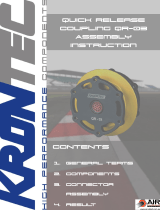Table of Contents
Overview ...................................................................................................................................................... 6
Prerequisites .............................................................................................................................................. 6
Frontend ................................................................................................................................................. 6
Backend ................................................................................................................................................. 6
ReadSoft PROCESS DIRECTOR for use with SAP Fiori® transports ..................................................... 7
Location ................................................................................................................................................. 7
Importing the transport ........................................................................................................................... 7
Checking the namespaces ........................................................................................................................ 7
Licensing.................................................................................................................................................... 8
Supported user types ................................................................................................................................ 9
Configuration ............................................................................................................................................. 10
Authorizations and roles .......................................................................................................................... 10
Assign the Web Service to user roles .................................................................................................. 10
SAP launchpad designer ......................................................................................................................... 11
Starting the launchpad designer .......................................................................................................... 11
Dynamic tiles ........................................................................................................................................ 12
Worklist .................................................................................................................................................... 13
Open the Worklist configuration ........................................................................................................... 13
Create the top level node ..................................................................................................................... 13
Create the subnodes............................................................................................................................ 14
Generate the Worklist .......................................................................................................................... 15
View model .............................................................................................................................................. 15
SAP Internet Communication Framework ............................................................................................... 15
Activate the service element tree node ................................................................................................ 15
Activate and maintain services ................................................................................................................ 16
SAP Gateway troubleshooting ................................................................................................................ 16















